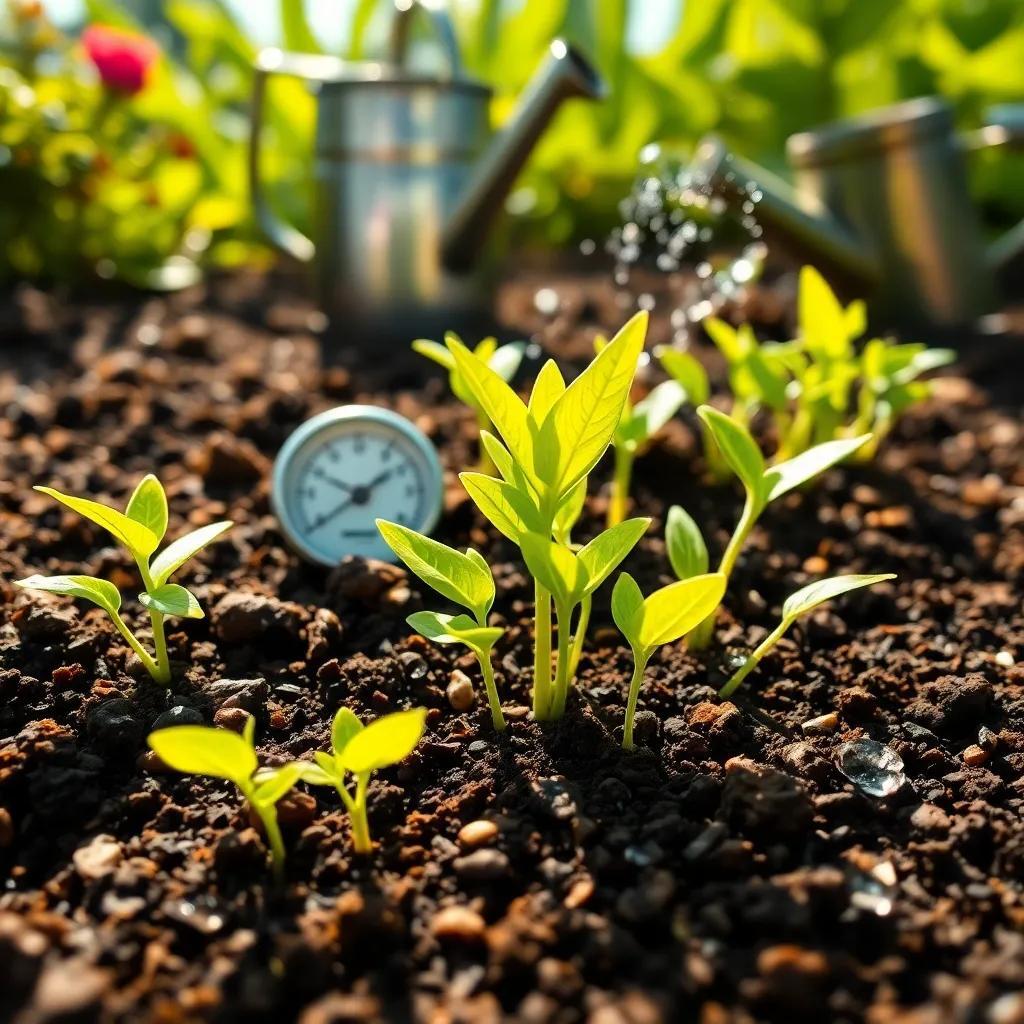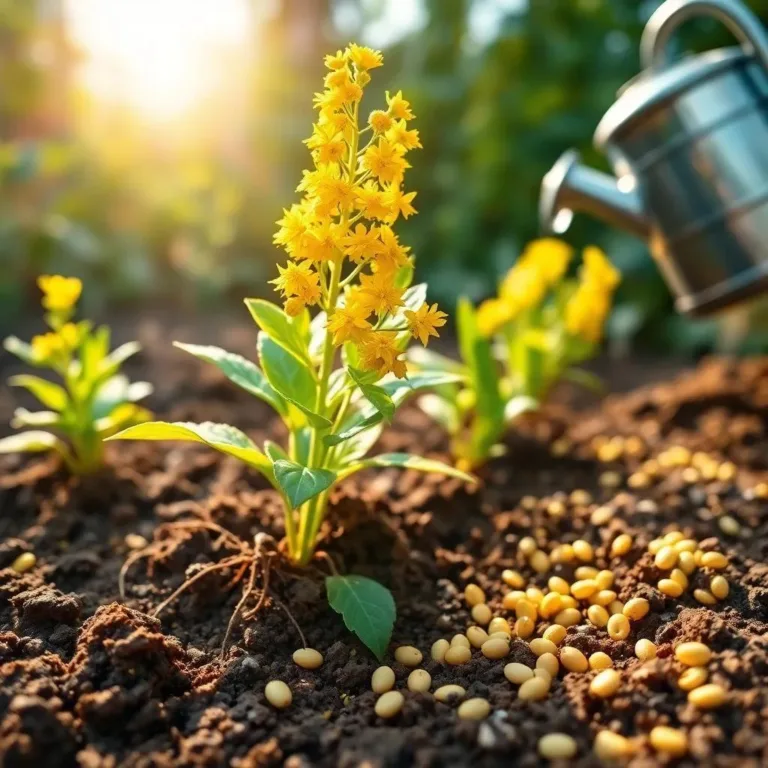Have you ever wondered just how mighty a tiny mustard seed can be? These little gems hold the potential to grow into vibrant plants that can jazz up your garden and your meals! Join me as we explore the fascinating world of mustard seed growth, from the best conditions for germination to tips for overcoming common challenges. Let’s get our hands dirty and grow some magic together!
Factors That Influence Mustard Seed Growth
Growing mustard seeds can feel like magic! These tiny seeds can transform into magnificent plants with just the right conditions. But what actually affects their growth? Let’s break it down!
1. Environmental Conditions:
Mustard seeds love sunlight! They need at least 6-8 hours of direct sunlight each day to grow strong and healthy. If they don’t get enough sun, their growth could lag, and who wants that? Keeping the temperature between 55°F to 75°F (13°C to 24°C) is also important. Too hot or too cold, and they might not germinate properly.
2. Soil Quality:
The soil is like a cozy blanket for mustard seeds! It should be well-draining, loamy, and rich in organic matter. Think of it as their favorite snack! The ideal pH level is between 6.0 and 7.5. If your soil is too compacted, the seeds might struggle to grow. So, give it some TLC by mixing in compost or aged manure. Yum!
3. Seed Quality:
Not all seeds are created equal! Always choose high-quality seeds from a trusted source. It’s like picking the best chocolate chip cookies – you want the good stuff! Soaking seeds in water for about 12 hours before planting can help them sprout faster.
4. Adequate Space:
Give your mustard plants some room to breathe! Plant them about 2-3 inches apart, so their roots can stretch out and soak up nutrients without fighting for space.
Understanding these factors plays a big role in how well your mustard seeds grow. By meeting their needs and creating a nurturing environment, you’ll be on your way to a glorious garden filled with mustard plants!
Ideal Conditions for Successful Germination
Now that we know what influences mustard seed growth, let’s talk about the ideal conditions for those little seeds to sprout! Germination is like waking up from a cozy nap – and we want our seeds to wake up happy!
1. Sunshine Galore:
Mustard seeds love soaking up the sun! Aim for full sun exposure, which means at least 6-8 hours of light daily. This helps them photosynthesize and grow strong. So, if you have a sunny spot in your garden, that’s the place to be!
2. Perfect Temperature:
Mustard seeds prefer moderate temperatures for germination. Keeping things cozy between 55°F to 75°F (13°C to 24°C) gives them the best chance to wake up and sprout. Spring and fall are perfect seasons to plant these seeds.
3. Consistent Moisture:
When it comes to watering, you need to strike the right balance! Keep the soil consistently moist, but avoid waterlogging because soggy soil is a no-go. Water your seeds regularly, especially during those hot, dry spells. It’s all about keeping them happy!
4. Quality Soil:
The soil must be rich and fertile! Mix in some compost or organic matter before planting. This gives the seeds the energy they need to kickstart their growth.
5. Air Circulation:
Good air circulation helps prevent fungal diseases and keeps your plants happy. Make sure the plants are spaced properly to allow fresh air to flow around them. Less moisture build-up means healthier seeds!
By following these ideal conditions, you’ll be creating a friendly environment for your mustard seeds. Remember, happy seeds make for happy plants! Let’s get those seeds growing!

Common Challenges in Mustard Seed Cultivation
Growing mustard seeds can be delightful, but there are a few challenges that can pop up like uninvited guests at a party! Let’s explore some of these challenges and what I’ve learned to overcome them.
1. Poor Soil Quality:
One of the biggest hurdles is dealing with poor soil. If your soil lacks nutrients or is too compacted, it can totally affect how your plants grow. Roots need space and nutrients to thrive! To fix this, I always test my soil and add some organic matter like compost. This gives my mustard seeds a fighting chance!
2. Insufficient Sunlight:
Mustard seeds are like sunbathers! If they don’t get enough sunlight, they can become weak and leggy. If your garden has shady spots, consider moving your seeds to a sunnier location or trimming back any pesky branches blocking the light.
3. Inconsistent Watering:
Watering can be tricky! Too much water can drown the seeds, while not enough can leave them thirsty. I keep an eye on the weather and stick to a routine, making sure my soil stays evenly moist but never waterlogged.
4. Weed Competition:
Weeds are like party crashers for your plants! They steal nutrients and space. I spend a little time each week weeding my garden. Mulching helps, too! It keeps the weeds down and conserves moisture.
5. Pest Problems:
Pests like aphids and flea beetles love mustard plants, too! I keep a close watch and use natural remedies to keep them at bay, like introducing ladybugs or using neem oil. Staying proactive is key!
By understanding these common challenges and how to tackle them, I can create a happy home for my mustard seeds. It’s all about connection, care, and a little bit of love!
Effective Strategies for Maximizing Growth
Now that we know what can go wrong, let’s chat about some effective strategies that can help maximize the growth of our mustard seeds! With these tips, you’ll be well on your way to a thriving garden!
1. Choose Quality Seeds:
I always start with high-quality seeds from reputable sources. Fresh seeds lead to better germination and healthier plants. Check those labels!
2. Proper Seed Preparation:
Soaking seeds in water for about 12 hours before planting helps soften their hard outer coat. This little trick boosts germination and gets them ready to grow fast!
3. Timing is Everything:
Planting your seeds in the spring or fall—when temperatures are just right—can make all the difference! It’s like setting the mood for a great party. You want the conditions to be perfect!
4. Spacing Matters:
Give those mustard plants some room to stretch! Planting seeds about 2-3 inches apart allows for air circulation and healthy root growth. They’ll appreciate having their own space!
5. Regular Watering and Feeding:
I love to keep my plants happy with a consistent watering schedule. Deep watering encourages strong roots. Adding organic fertilizers during the growing season provides extra nutrients, making my plants grow like champions!
6. Monitor Pests and Diseases:
Keep a close eye on your plants for any pests or diseases. I like to check my garden regularly and take preventative measures. Natural pest control methods can go a long way!
By using these strategies, I can maximize the growth of my mustard seeds, ensuring they become vibrant and bountiful plants. Happy gardening!
Frequently Asked Questions About Mustard Seeds
If you’ve got questions about mustard seeds, you’re in the right place! Here are some frequently asked questions that I often hear from fellow gardening buddies!
Q: What is the best soil type for mustard seeds?
A: Mustard seeds thrive in well-draining, loamy soil that’s rich in organic matter. Aim for a pH level between 6.0 and 7.5.
Q: How often should I water my mustard plants?
A: Keep the soil consistently moist, but not waterlogged. Regular watering is key, especially during dry spells!
Q: Can I grow mustard seeds in containers?
A: Absolutely! Just make sure the containers have drainage holes. A depth of at least 6 inches is great for root development.
Q: When is the best time to plant mustard seeds?
A: The ideal time to plant is in early spring or late summer. Just make sure the temperatures are between 55°F to 75°F for best results!
Q: How tall can mustard plants grow?
A: Depending on the variety and conditions, mustard plants can reach heights of 1 to 5 feet. Some are bushy, while others can grow quite tall!
These FAQs help clarify some common concerns about mustard seed growing. Happy gardening, and may your mustard plants flourish!

